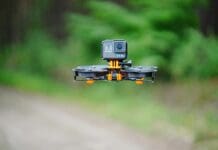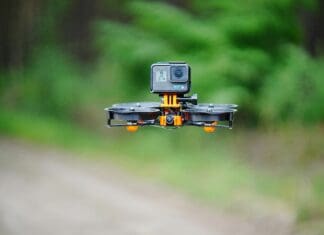
This post is also available in:
 עברית (Hebrew)
עברית (Hebrew)
The US Marine Corps has been fielding an unmanned system designed to neutralize explosive threats underwater. The explosive ordnance disposal remotely operated vehicle is a box-shaped robot that allows Marines to identify and neutralize explosive threats from a distance.
The robot can swim to depths of up to 1,000 feet and is equipped with both sound navigation and sonar sensors for increased situational awareness in low visibility underwater environments.
The system can also be applied in other potentially hostile or dangerous environments. For example, the robot could survey areas after natural disasters or investigate sunken vessels.
The platform requires less training to operate compared to other unmanned underwater systems, according to the service.
Designed by Strategic Robotic Systems, Fusion is outfitted with high-definition video capabilities and an articulator arm, which decreases the risks posed during underwater operations.
The platform incorporates a suite of high-end sensors designed to enable operators to accomplish complex missions. From a variety of imaging sensors to navigational aids the platform is a tightly integrated system that improves vehicle dynamics and eliminates troublesome cables/connectors.
The device is the first of the Littoral Explosive Ordnance Neutralization Family of Systems, a series of EOD systems to be fielded gradually by Marine Corps Systems Command in the next several years. The platforms will provide support in the underwater environment, along with bringing communications topside from the underwater environment up and out, according to nationaldefensemagazine.org.

























